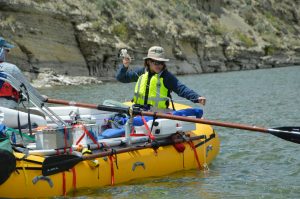Language of Landscapes: Understanding Cultures Through Their Environments
The beauty and diversity of our world is often captured in the landscapes that surround us. From lush forests to arid deserts, the environments we inhabit shape our lives in countless ways. But beyond their physical characteristics, landscapes also hold a deeper meaning – they reflect the cultures, histories, and beliefs of the people who call them home. In this article, we delve into the fascinating concept of the “language of landscapes” and how it can help us understand different cultures around the globe.
The Link Between Landscapes and Culture
Every culture has its own unique way of interacting with the environment. From how they use the land for agriculture to the symbols they incorporate in their art and architecture, landscapes hold significant cultural significance. Just as any spoken language, landscapes too have their own vocabulary – a set of features and elements that communicate a specific message about the people who inhabit them.
The Role of Geography
Geography plays a crucial role in shaping landscapes and consequently, the cultures that emerge from them. For example, in countries with a long history of nomadic lifestyles, landscapes are often vast and varied, reflecting the nomads’ constant movement to find resources and settle in different areas. In contrast, cultures that develop in mountainous regions tend to value resilience and hardiness, as their landscapes are harsh and unforgiving.
The Influence of Climate
Climatic conditions also play a significant role in shaping landscapes and cultures. In regions with extreme weather conditions, landscapes often have unique features that reflect the challenges and adaptations of the people who live there. For instance, the traditional igloos of the Inuit people are a perfect example of how landscapes and cultural practices are intertwined.
The Language of Symbols
Symbols are an essential part of any culture, and they often find their expression in the landscapes. From sacred mountains to ritualistic trees, every culture has its own set of symbols that communicate important cultural values and beliefs. These symbols are often deeply ingrained in the landscape, and to understand them, one must have a deeper understanding of the relationship between the environment and the culture.
The Power of Preservation
Unfortunately, in today’s rapidly evolving world, the language of landscapes is at risk of being lost. As modernization and globalization continue to spread, many cultural landscapes are being destroyed or altered, robbing us of valuable insights into a culture’s history and identity. However, there is hope – efforts to preserve and protect these landscapes are gaining momentum, and people are more aware now than ever before about the importance of cultural diversity.
Using the Language of Landscapes to Foster Understanding
The language of landscapes has the power to build bridges between cultures and foster understanding. By appreciating the diverse ways in which humans interact with their environments, we can gain a deeper understanding of different cultures and their values. This can ultimately lead to mutual respect and a more harmonious world.
Learning from Indigenous Cultures
Indigenous cultures across the world have a strong connection to their landscapes, and this relationship can teach us valuable lessons about sustainable living and respecting the environment. By studying their practices and beliefs, we can gain insights into how we can better preserve and protect our own landscapes.
Travel as a Means of Understanding
One of the best ways to understand the language of landscapes is to travel and experience different cultures first-hand. As we immerse ourselves in different environments and observe how the locals interact with their surroundings, we can gain a deeper appreciation for their language of landscapes. This can also serve as a reminder of the diversity and richness of our planet and the importance of preserving it for future generations.
Final Thoughts
The language of landscapes is a powerful tool that can help us understand and appreciate the diverse cultures of our world. By recognizing the deep and meaningful connection between people and their environments, we can foster respect and understanding for each other and our planet. So, the next time you marvel at a breathtaking landscape, remember to also pay attention to the cultural message it is conveying.











